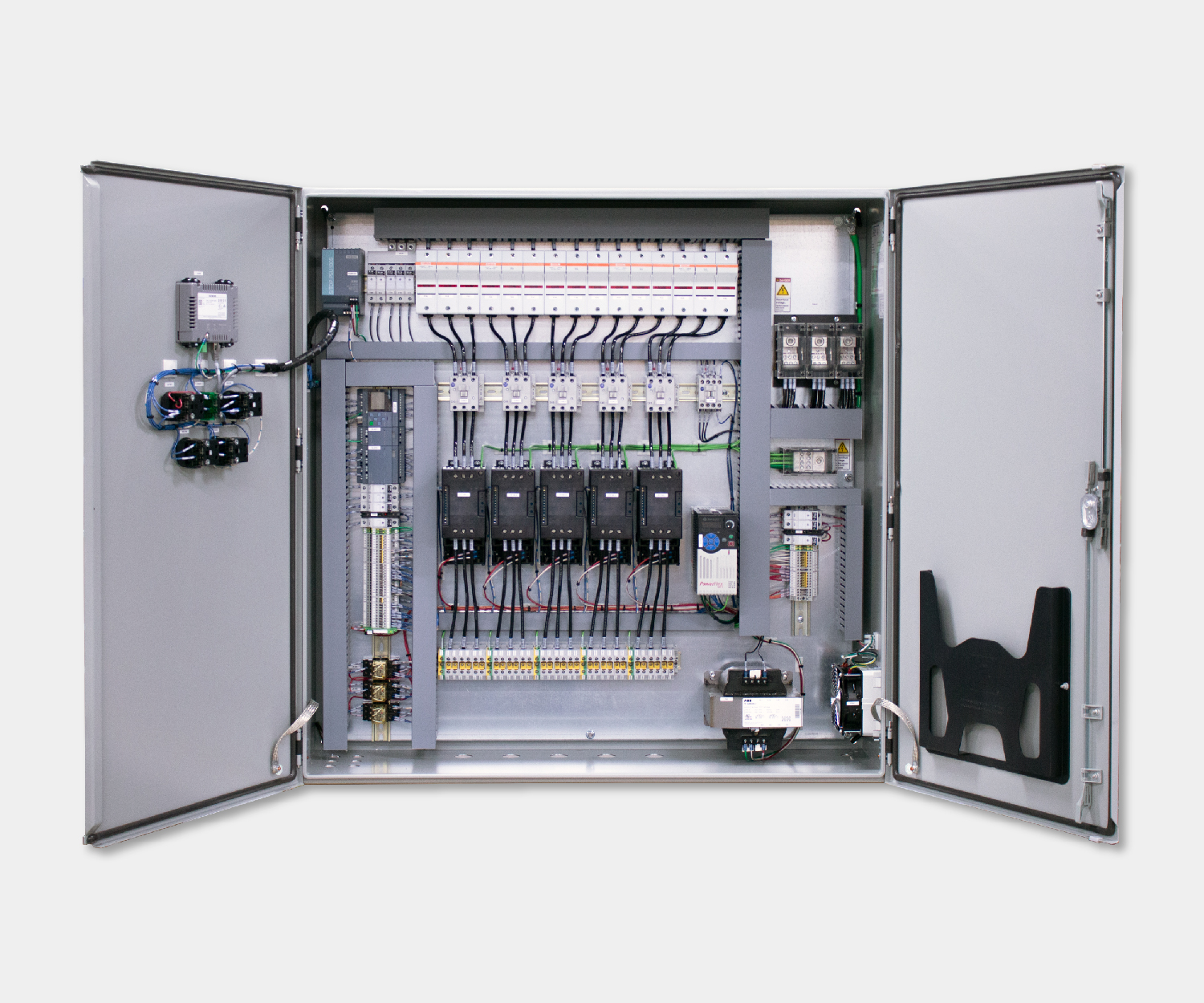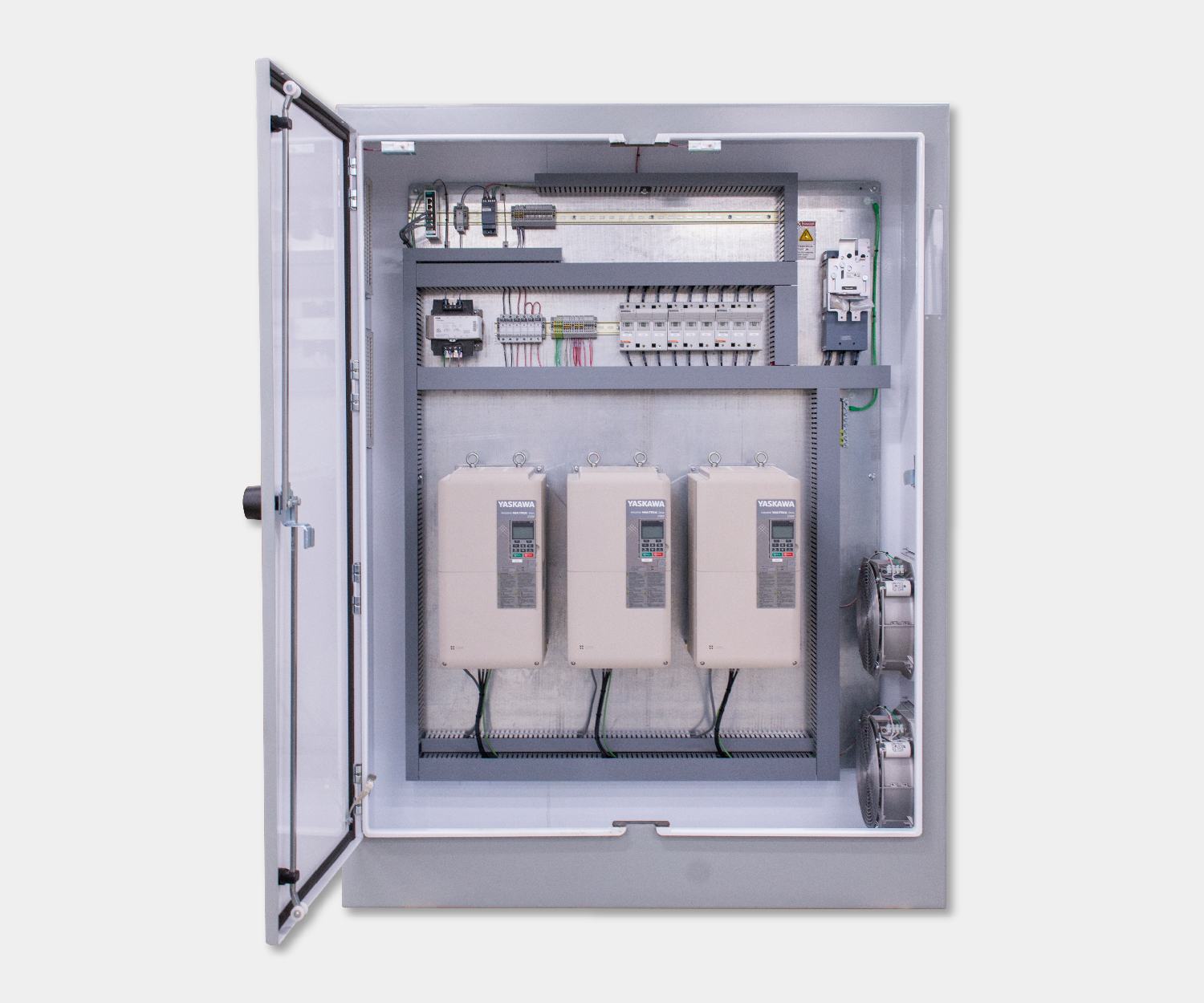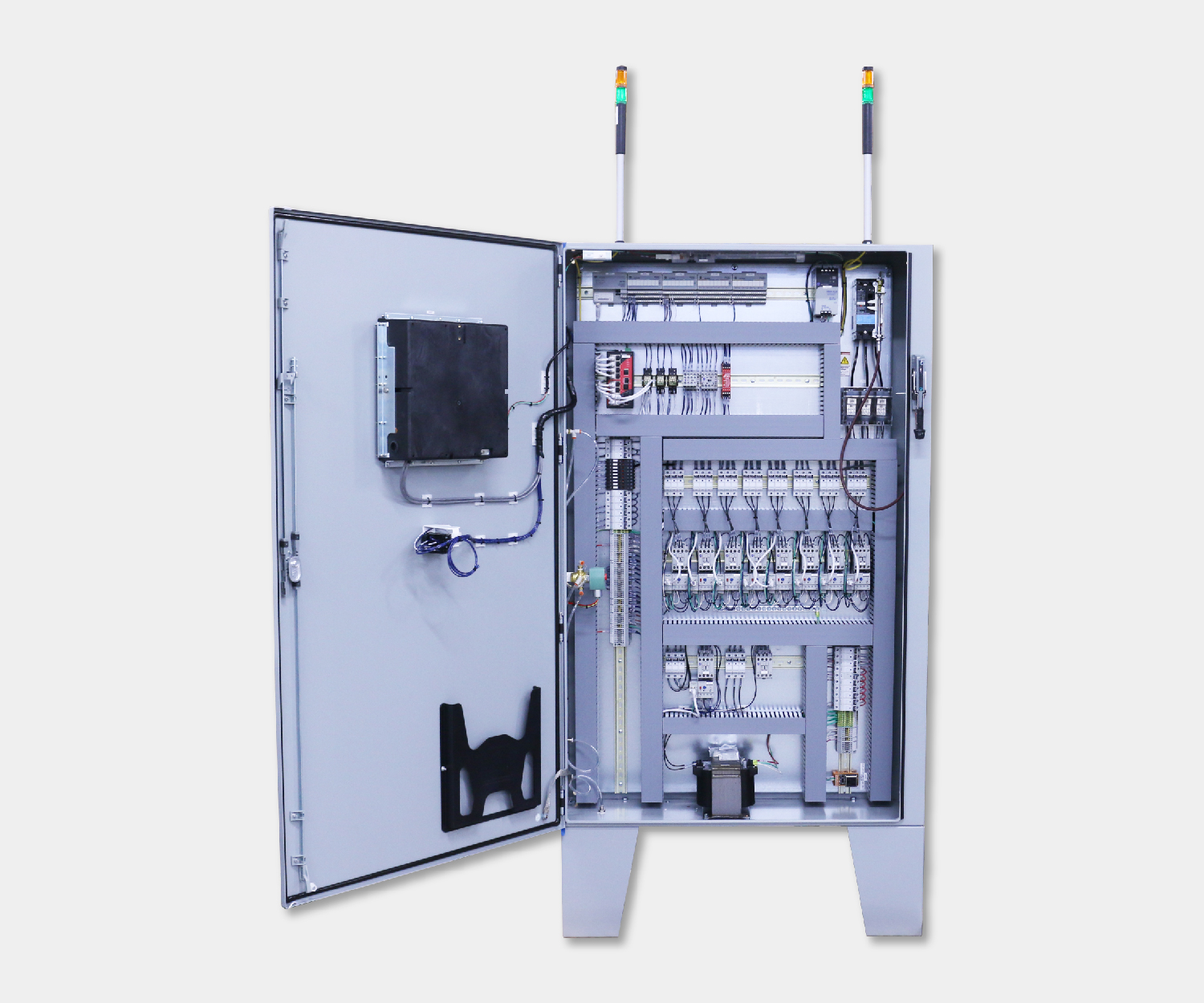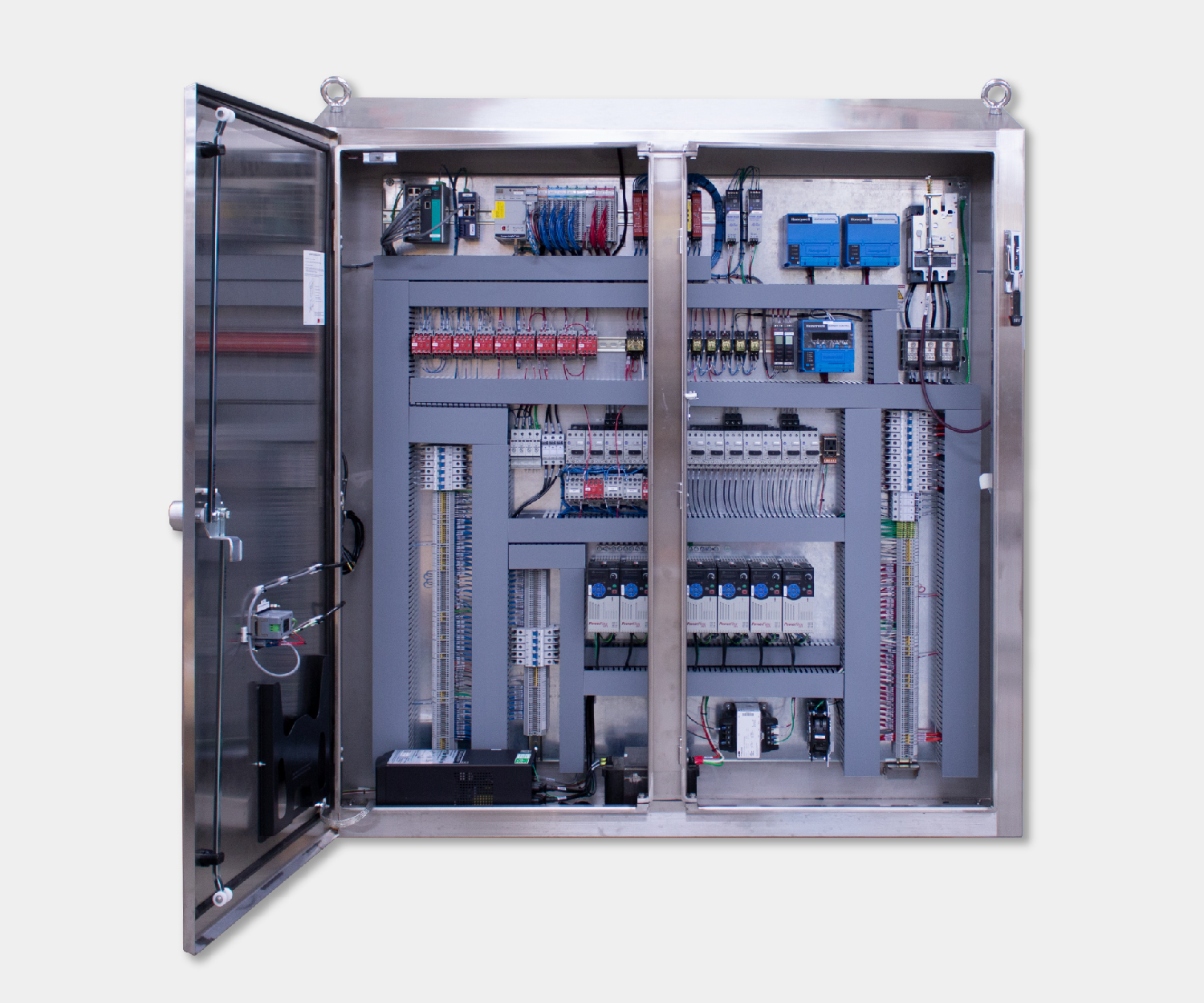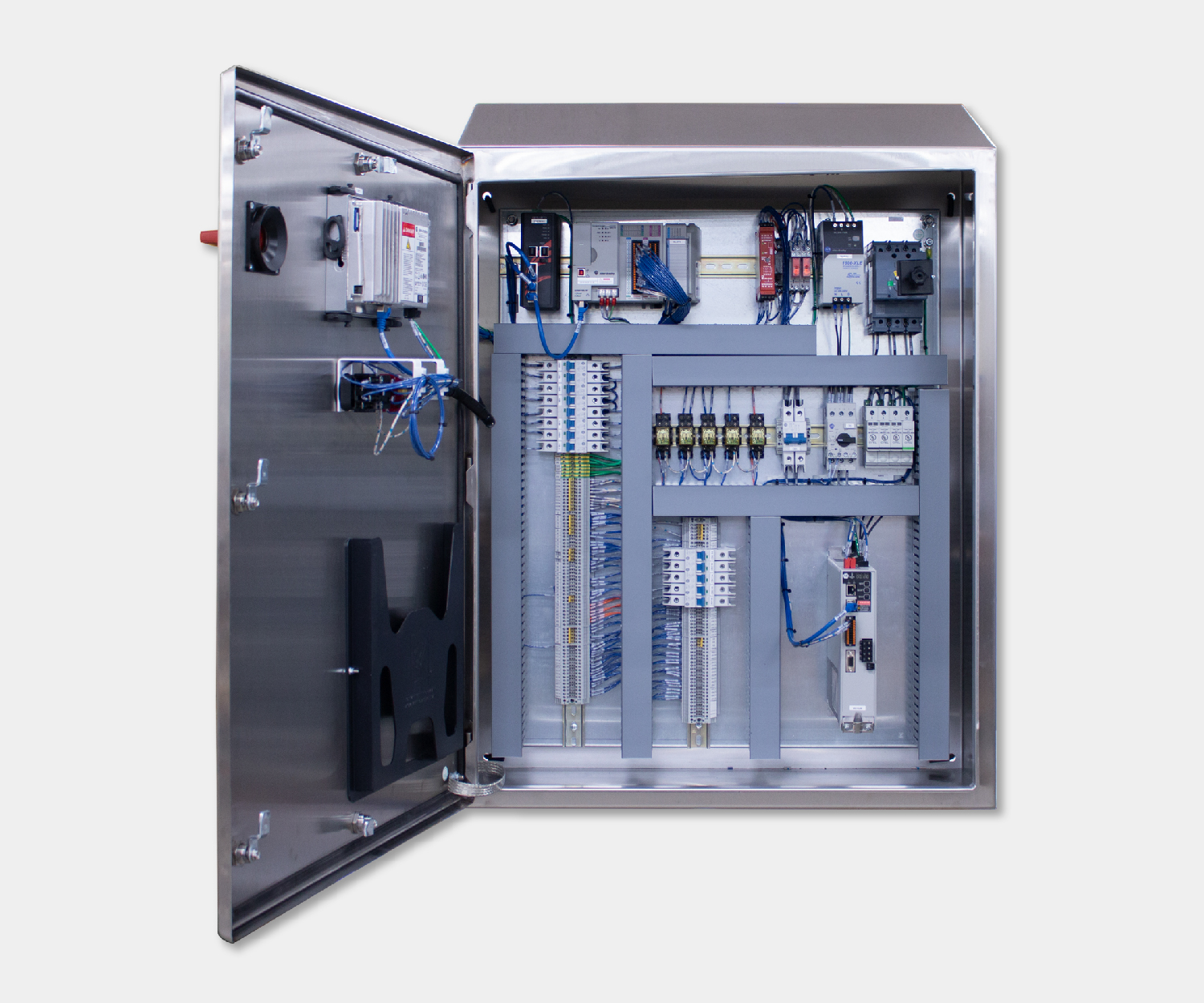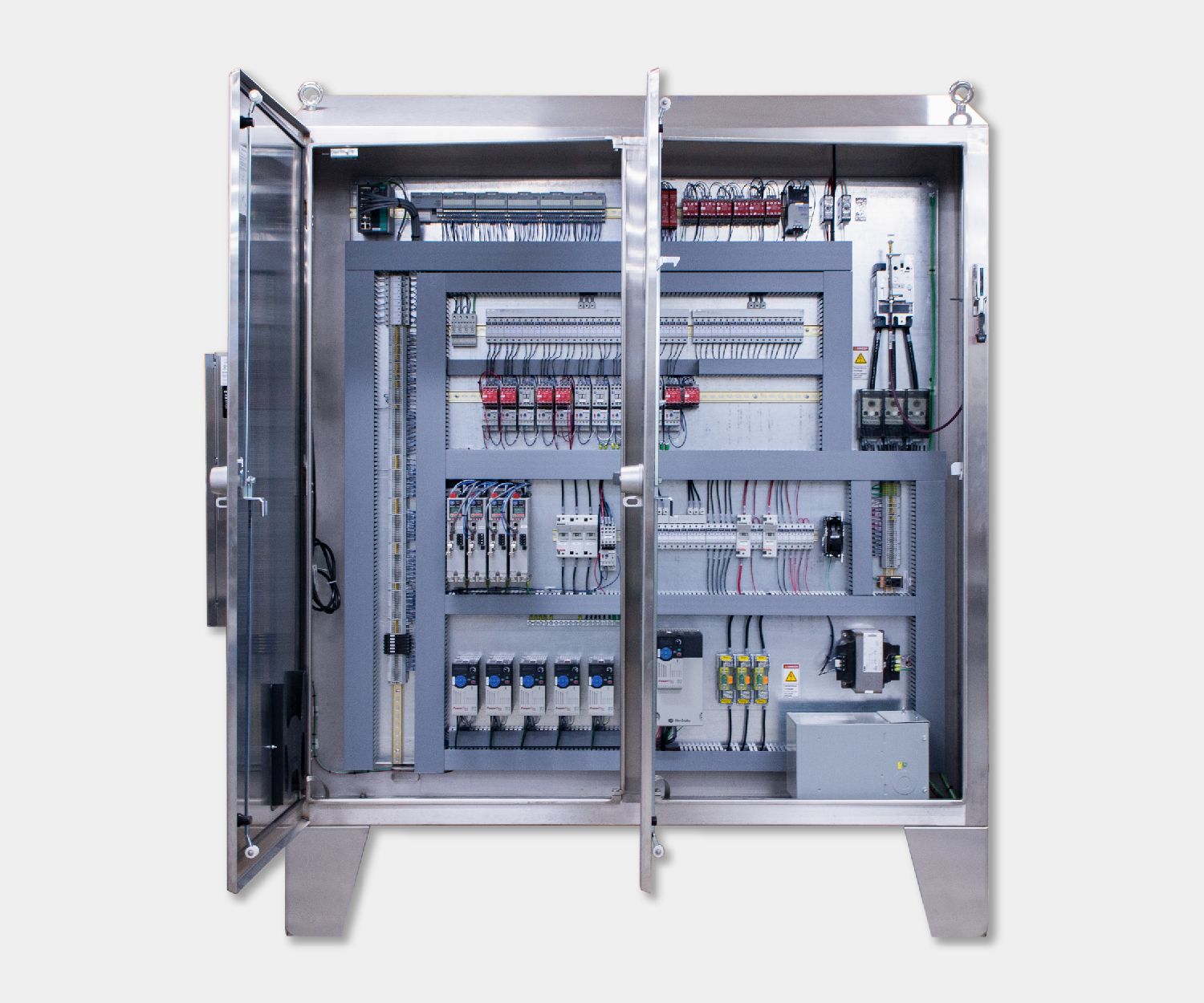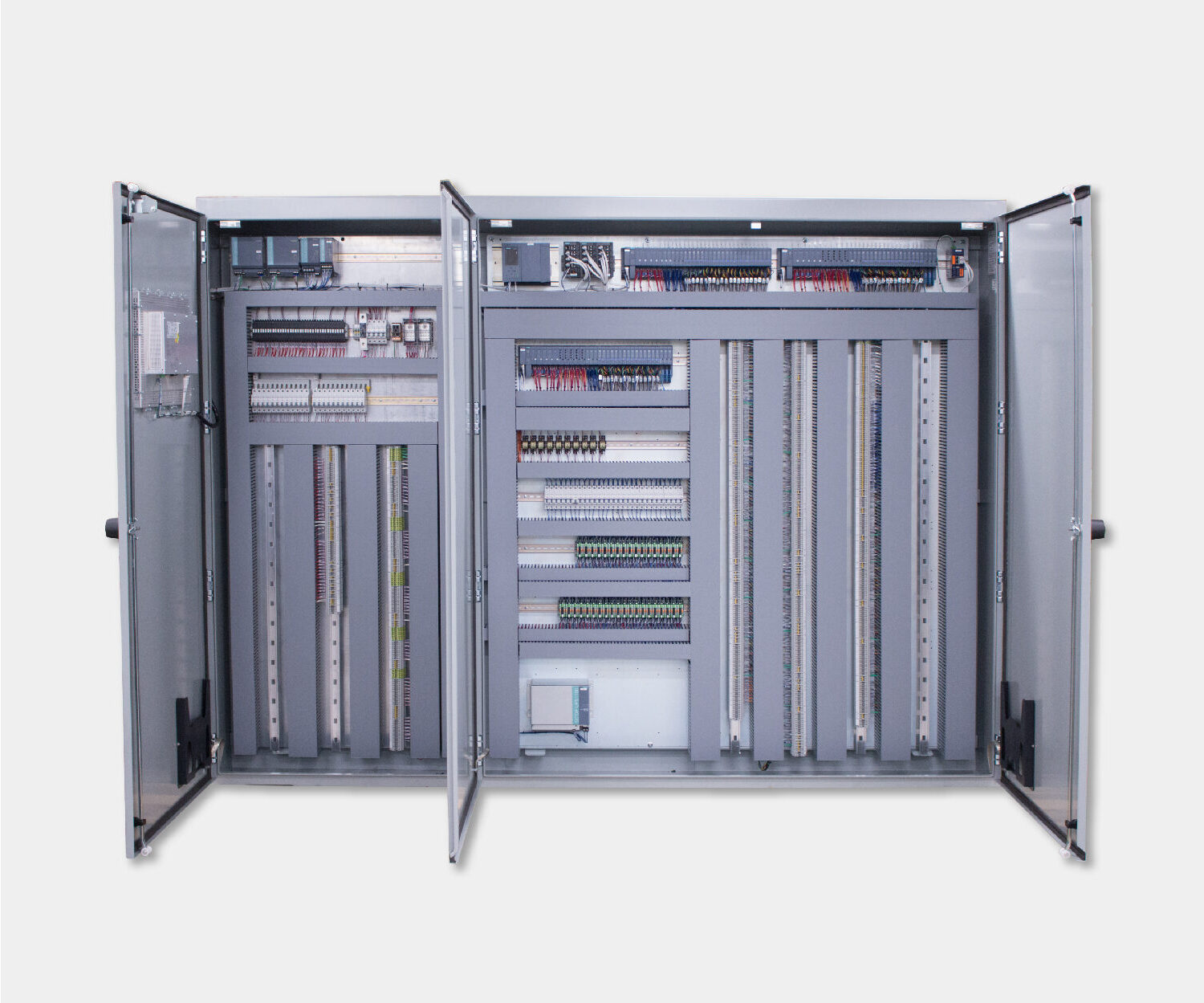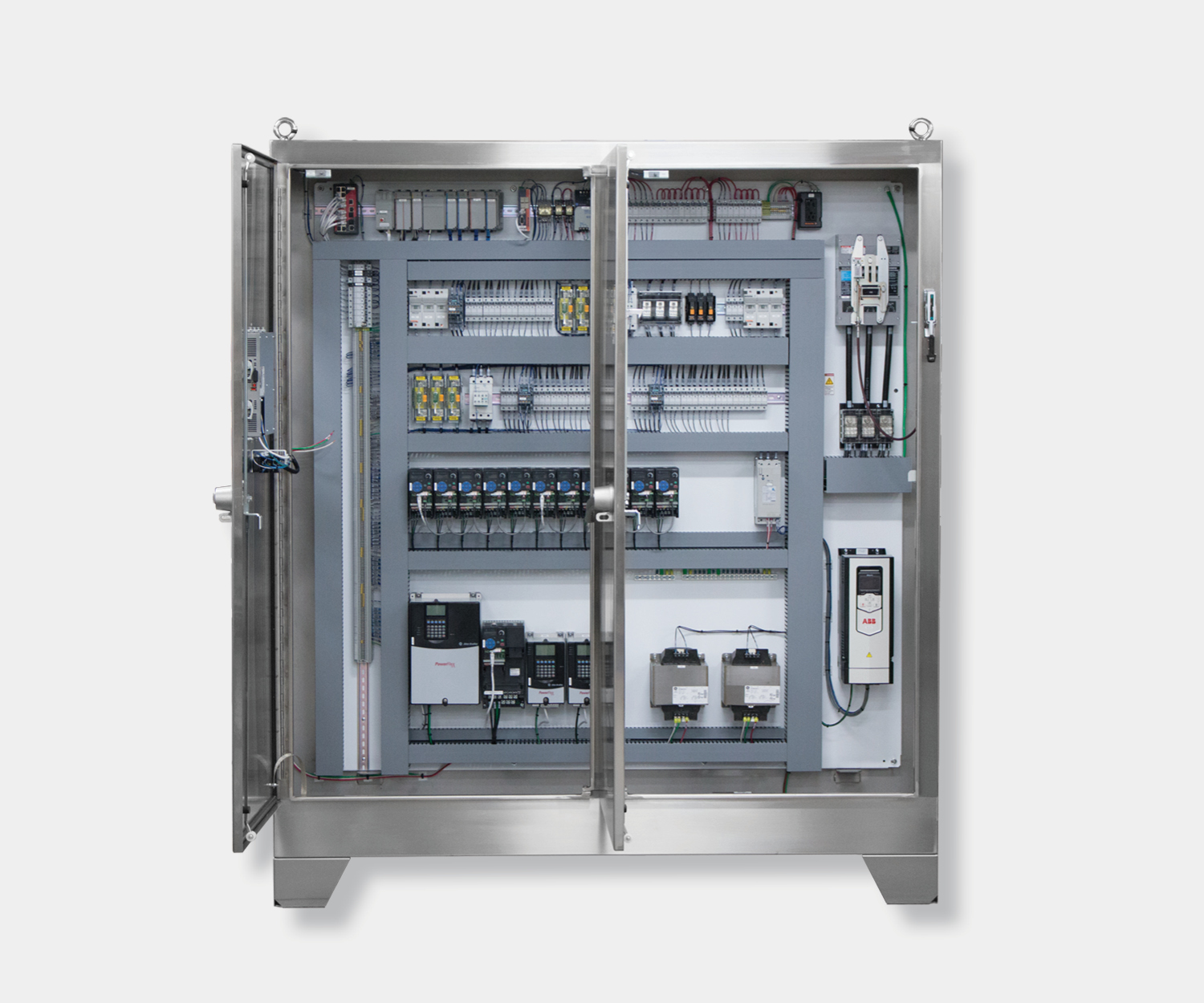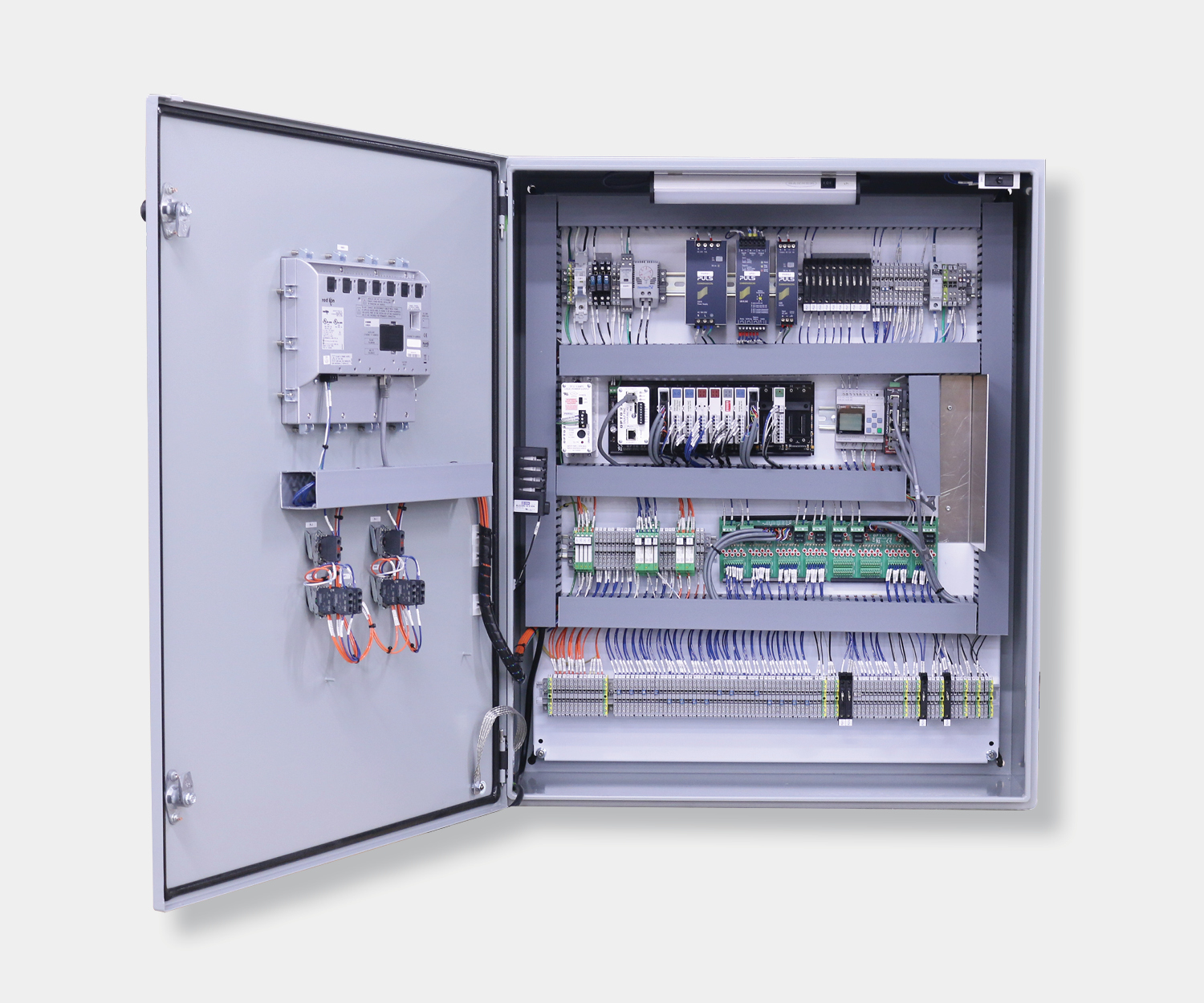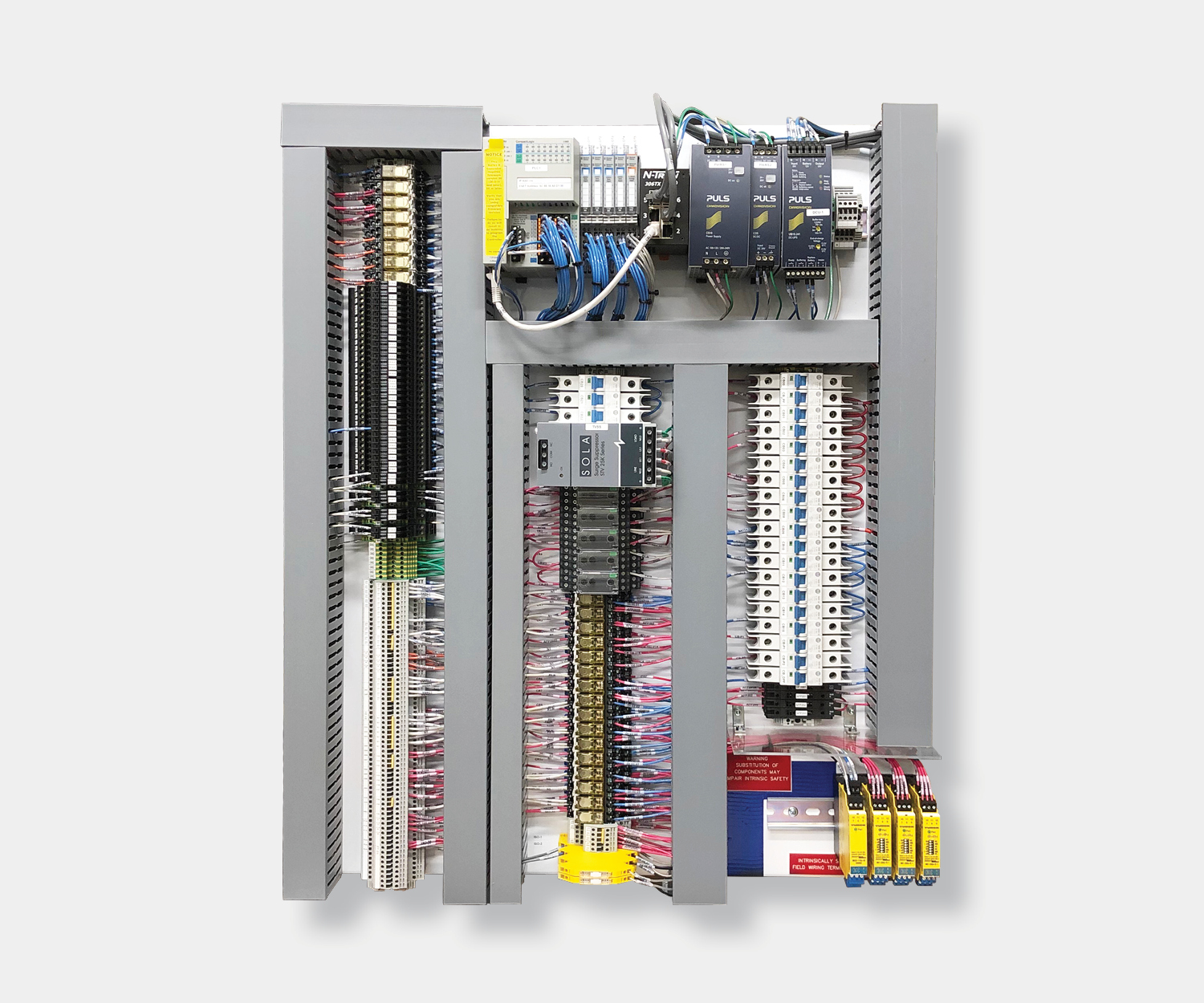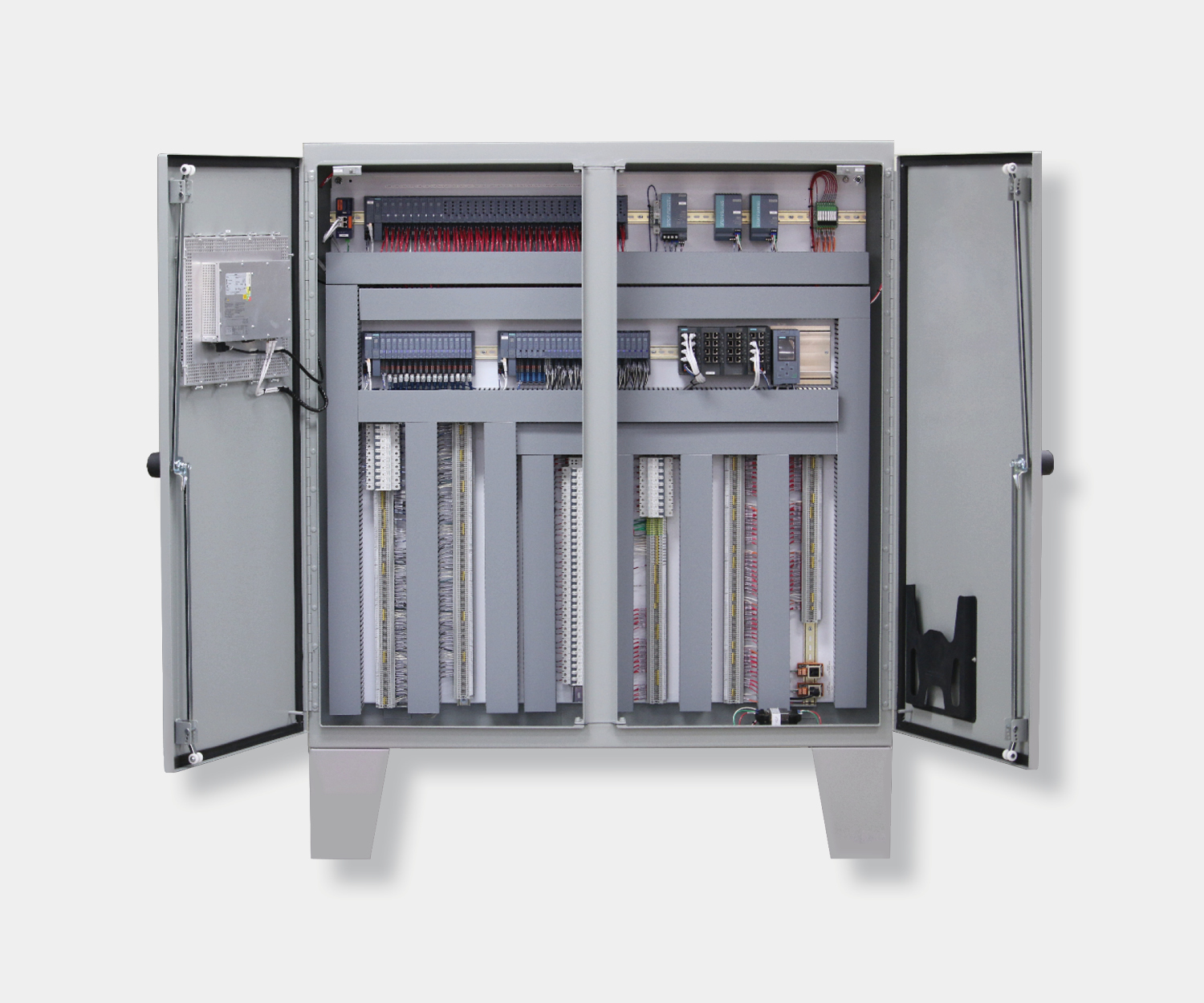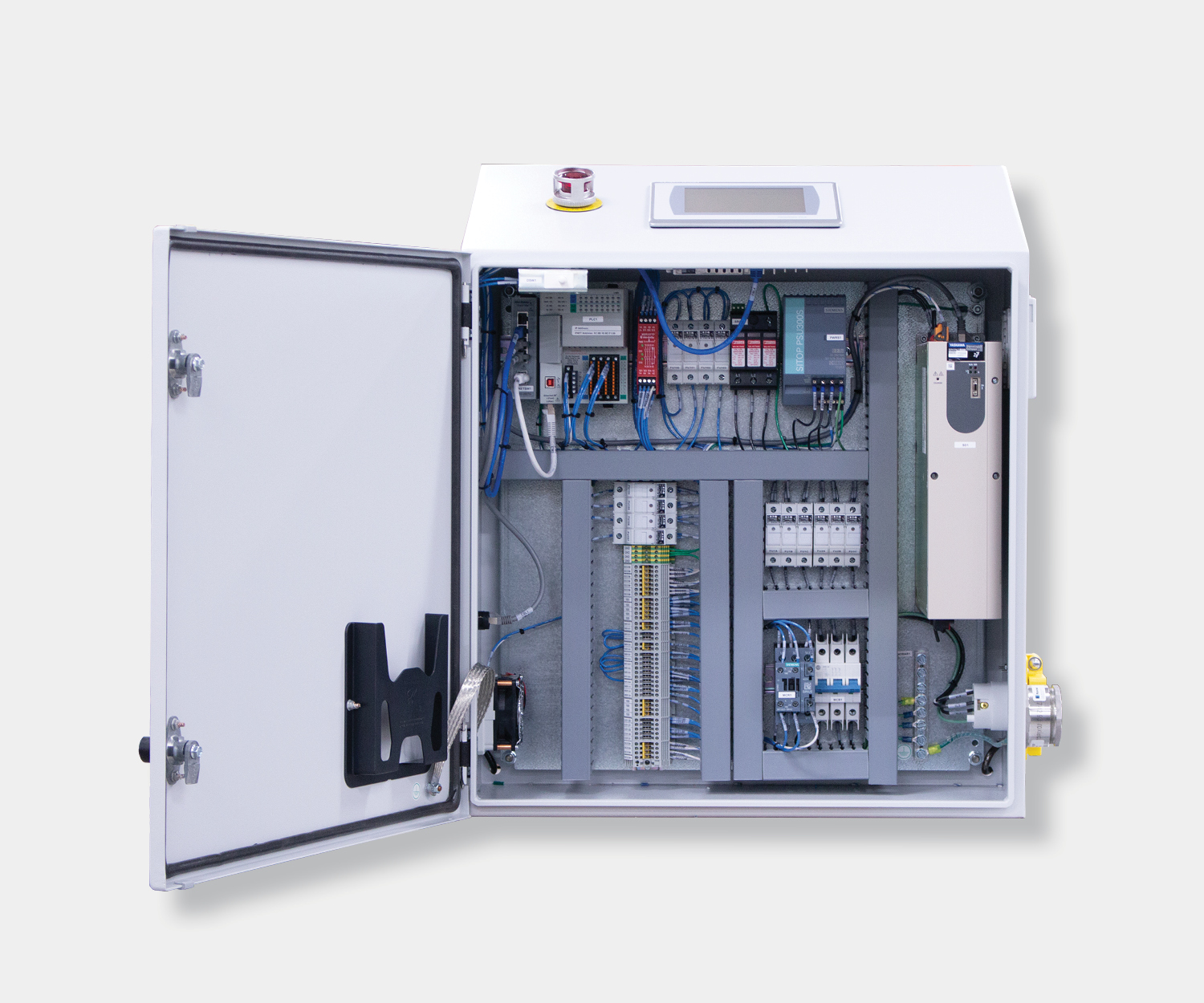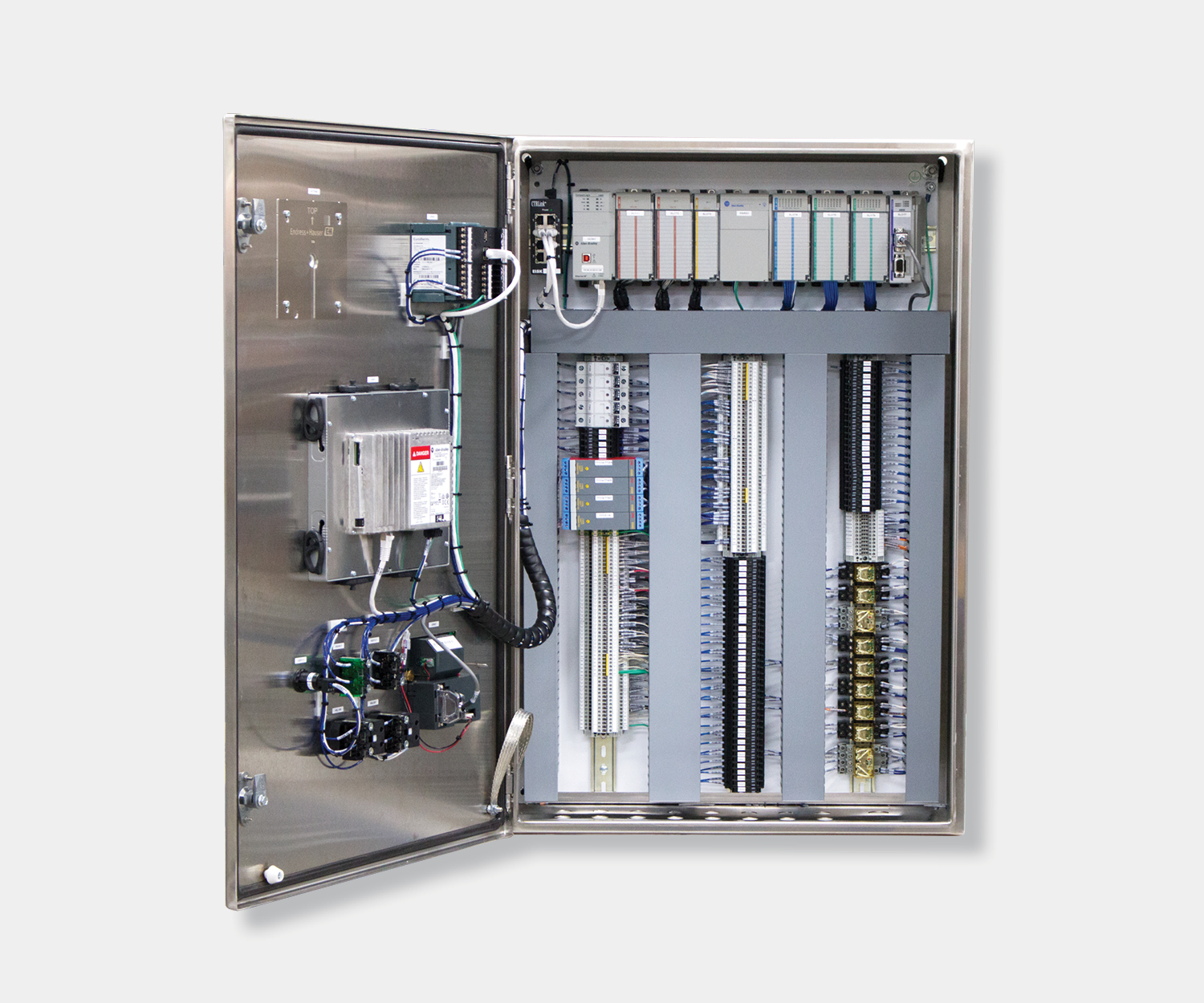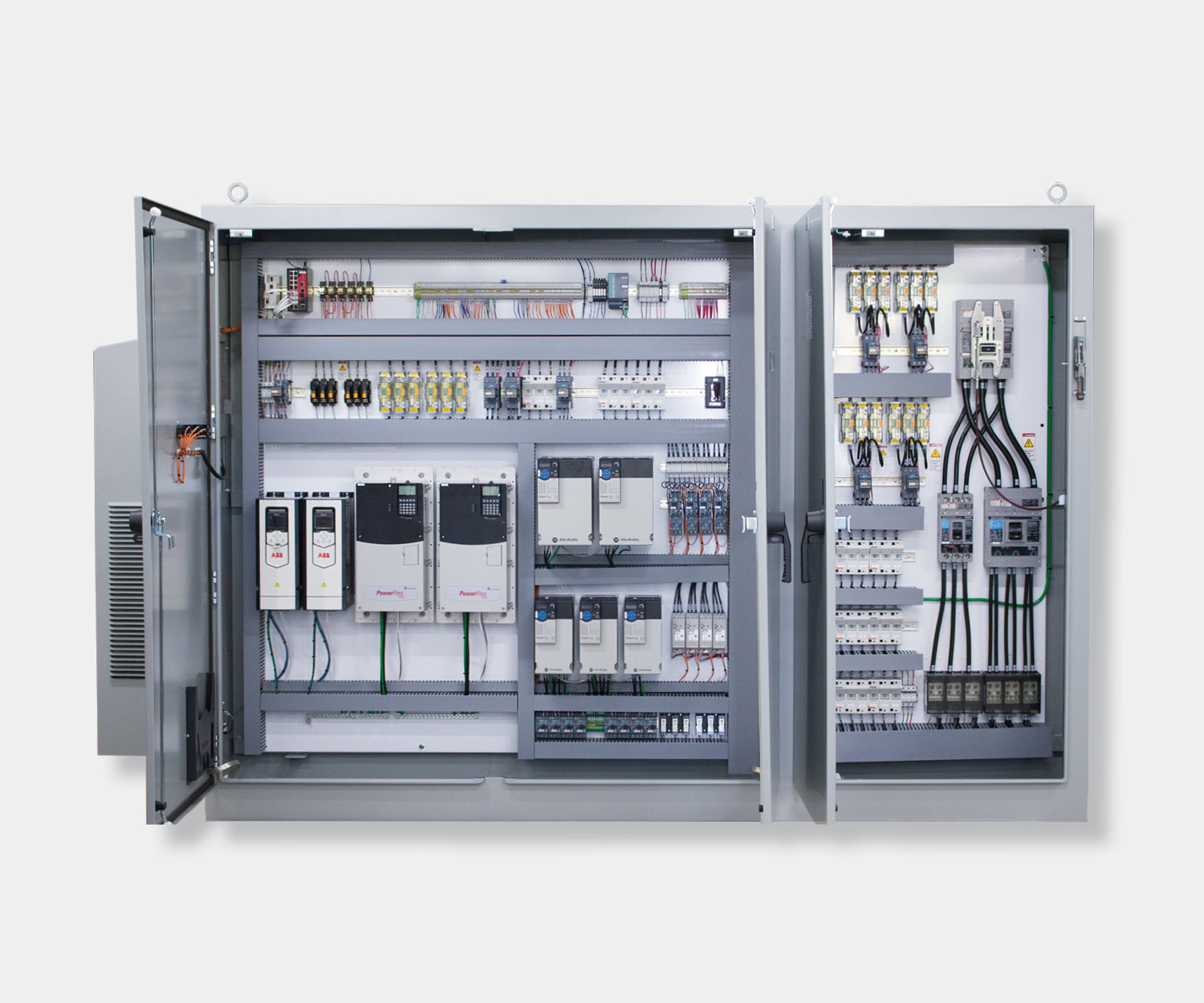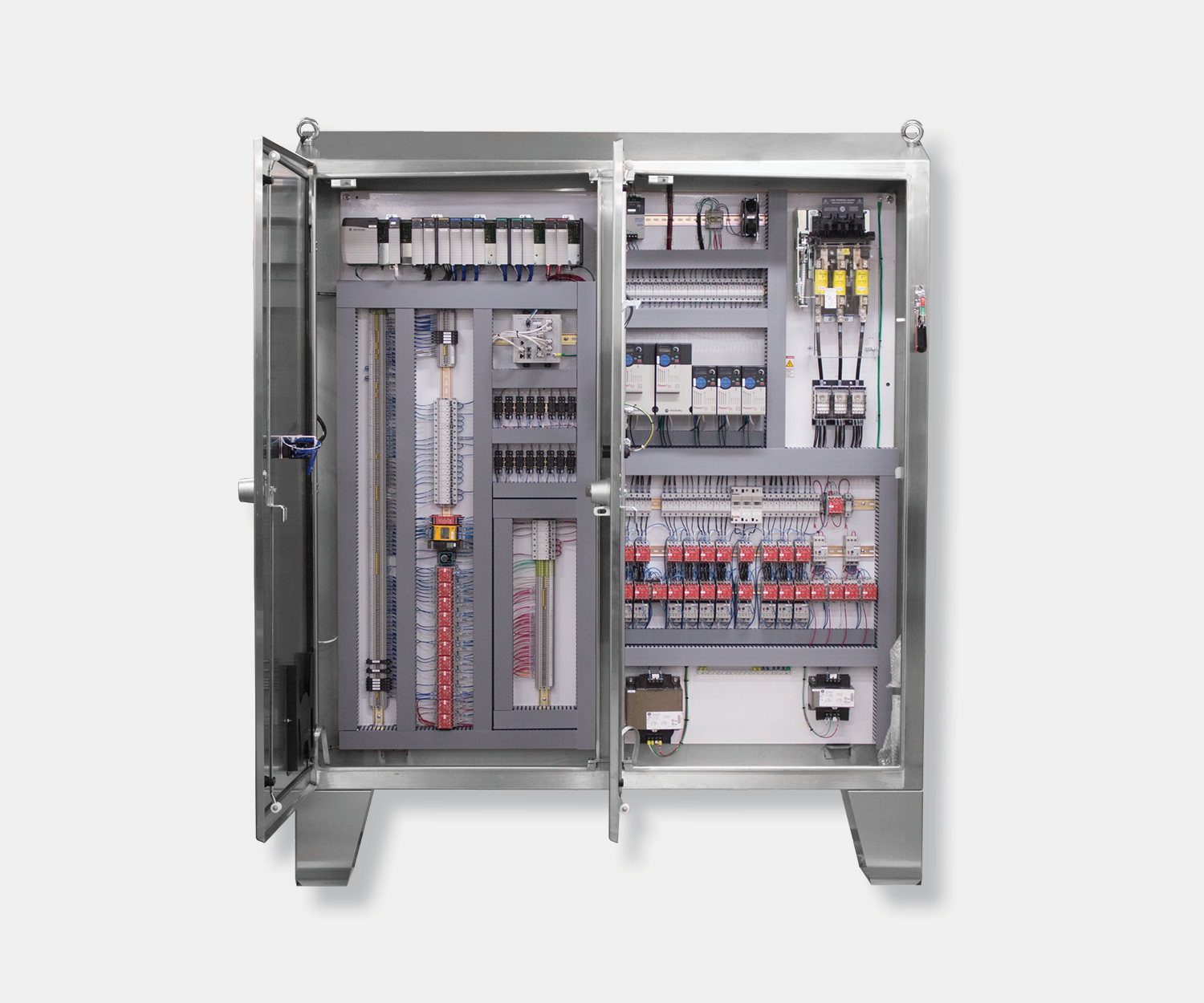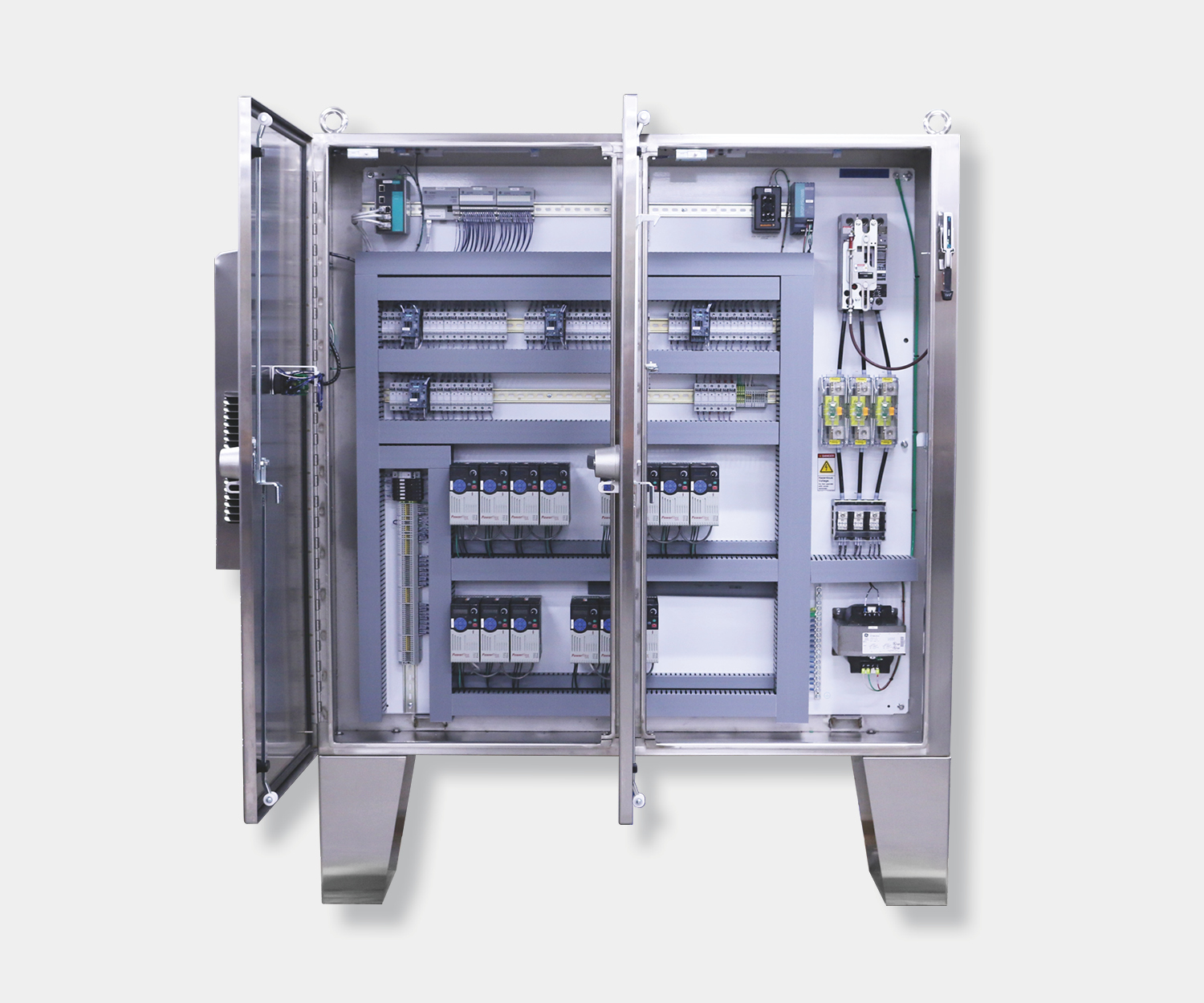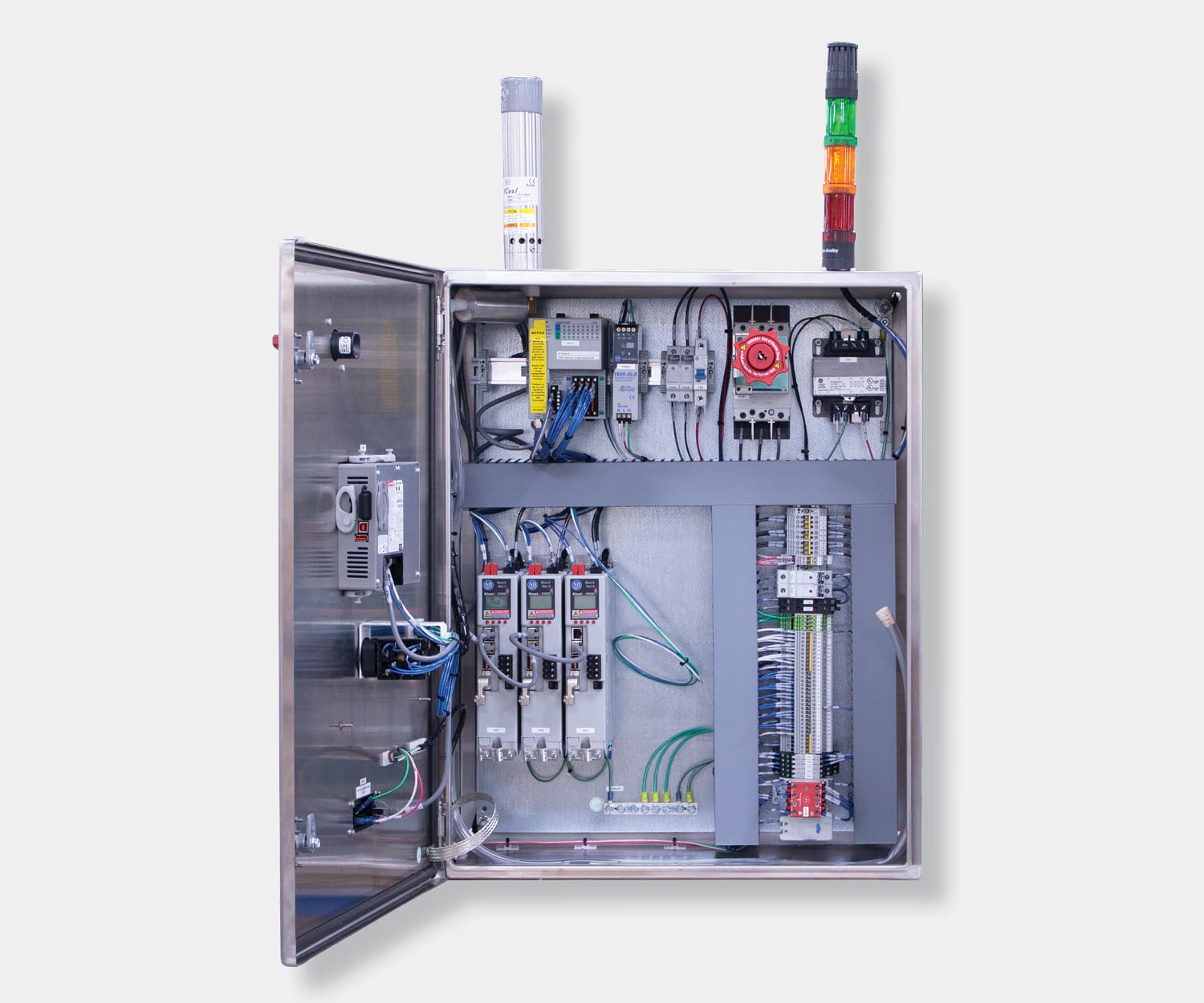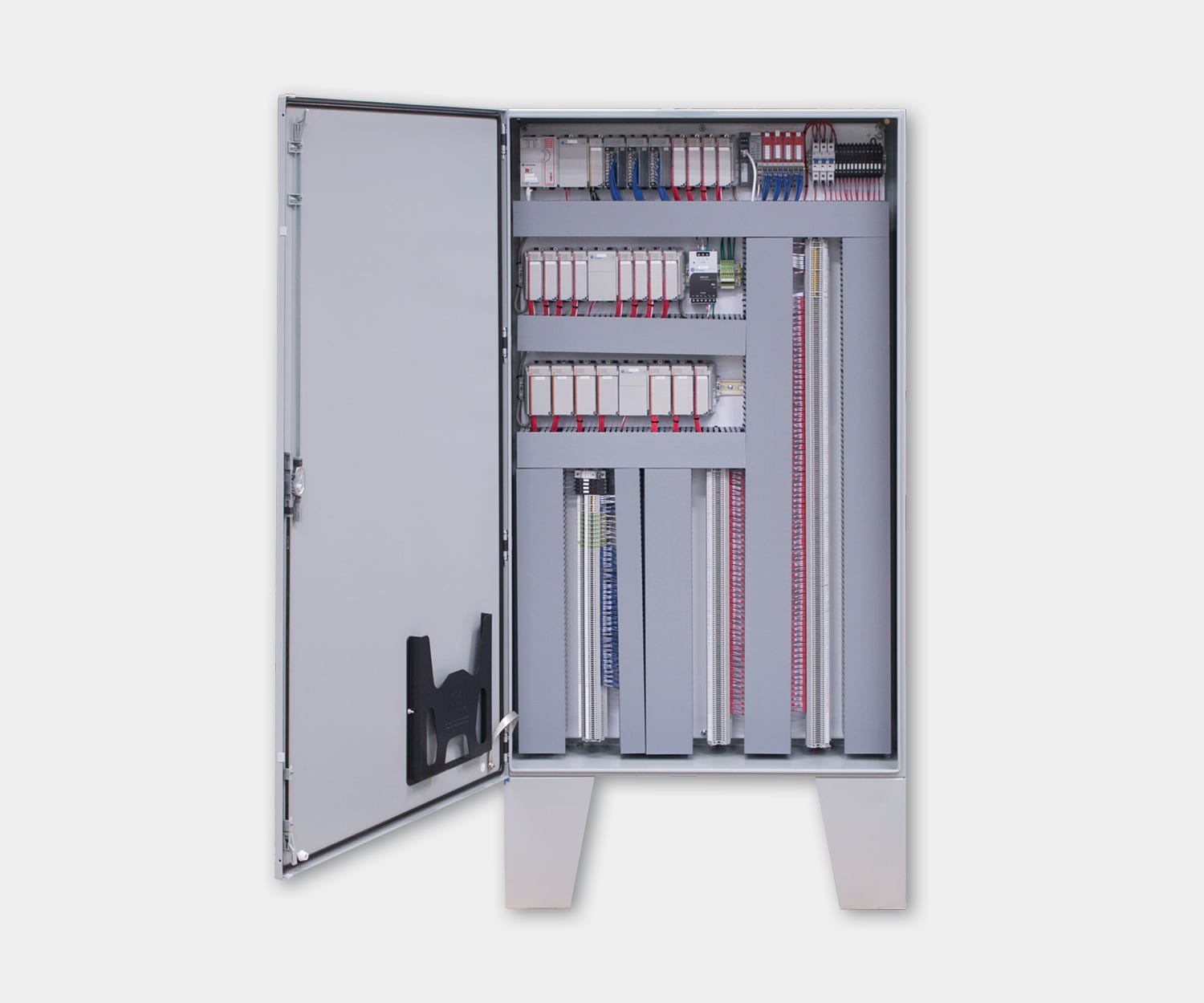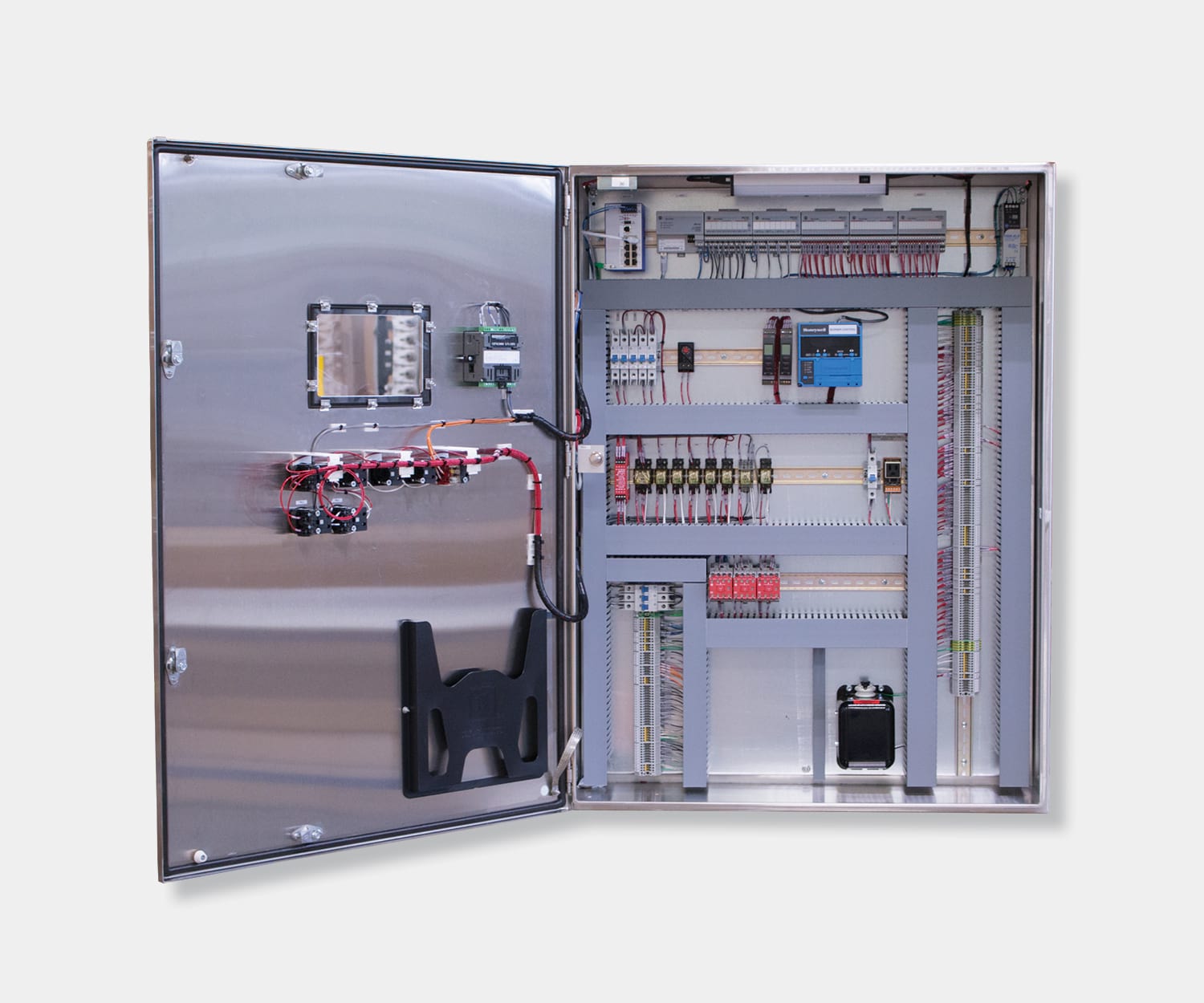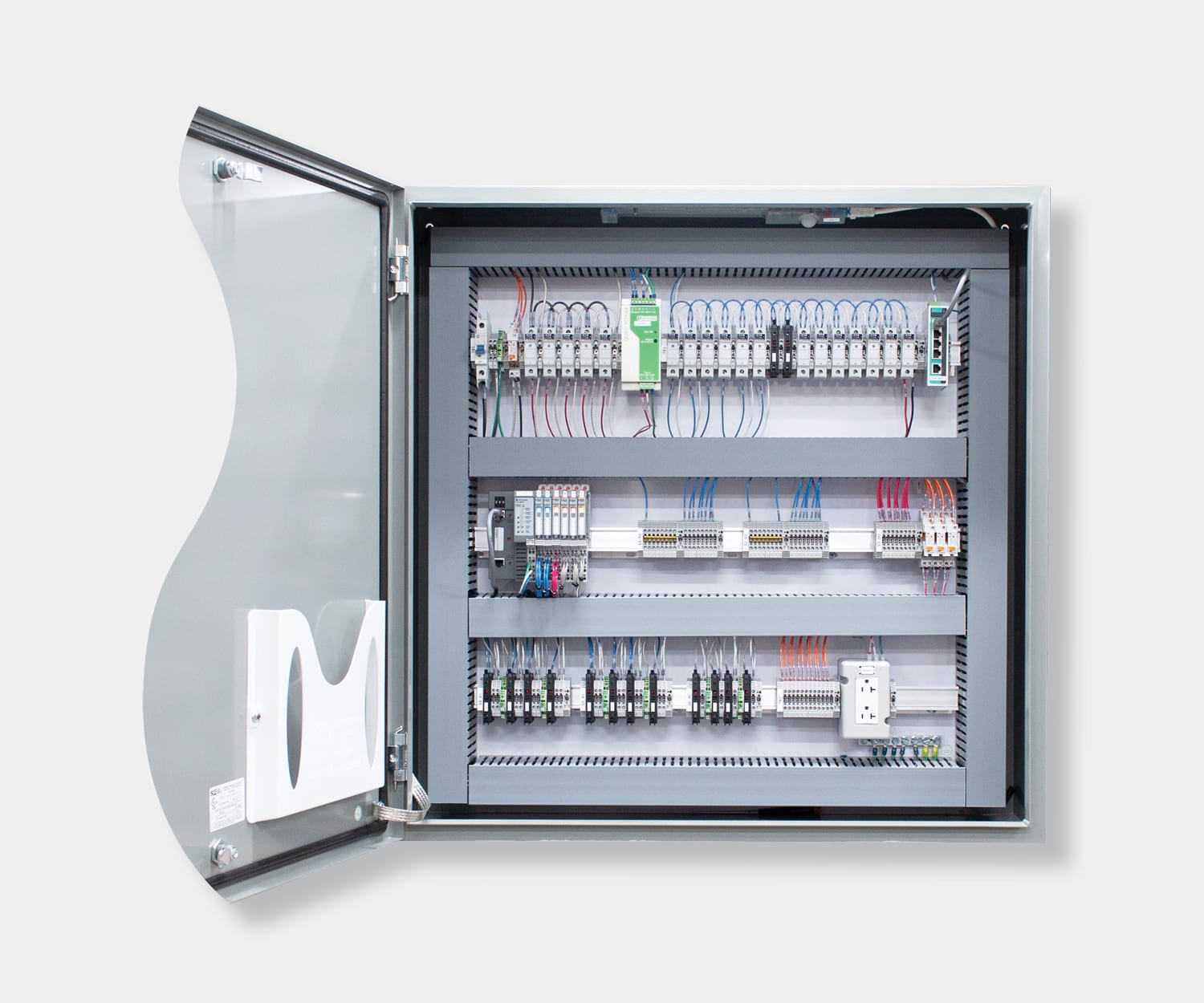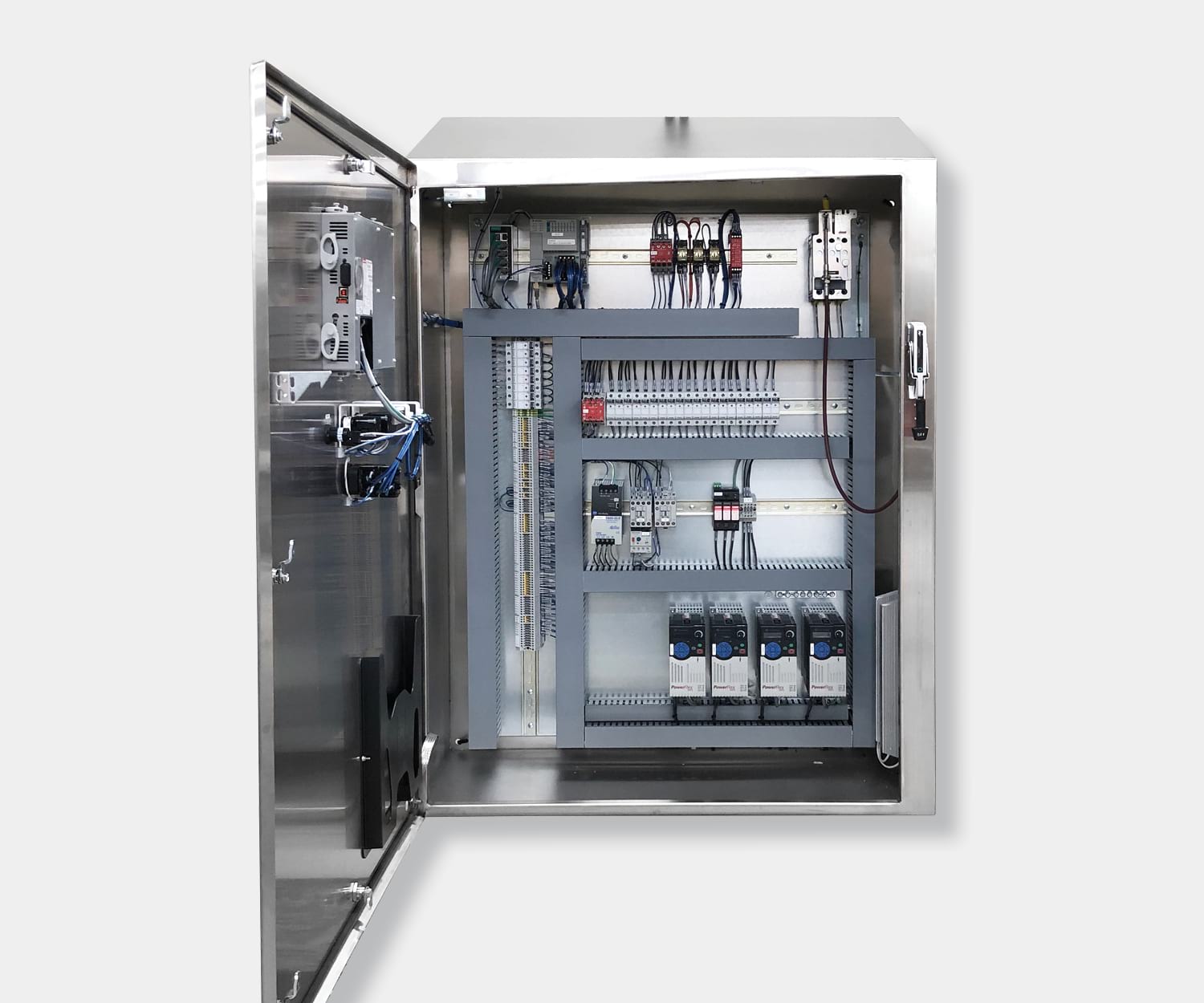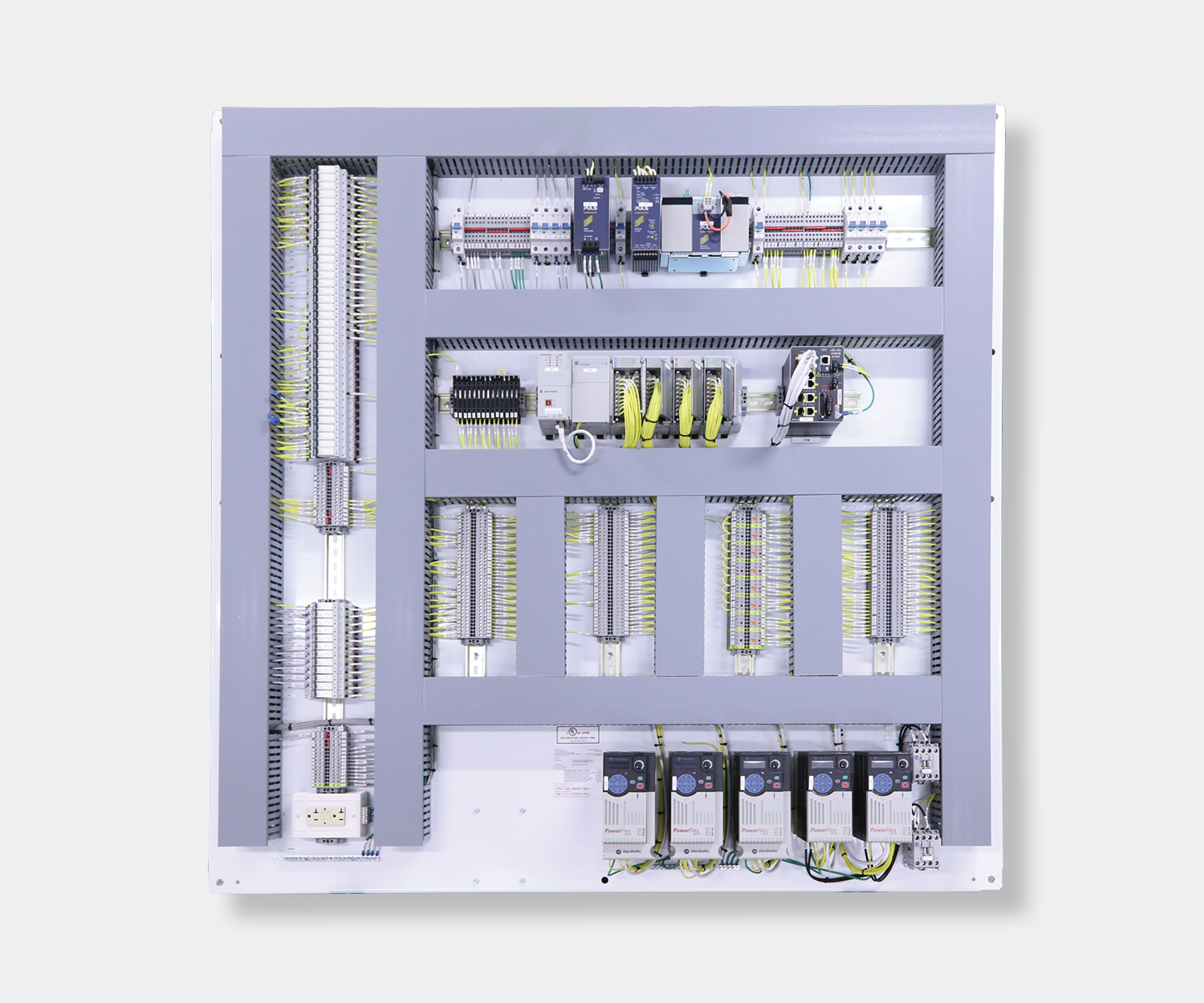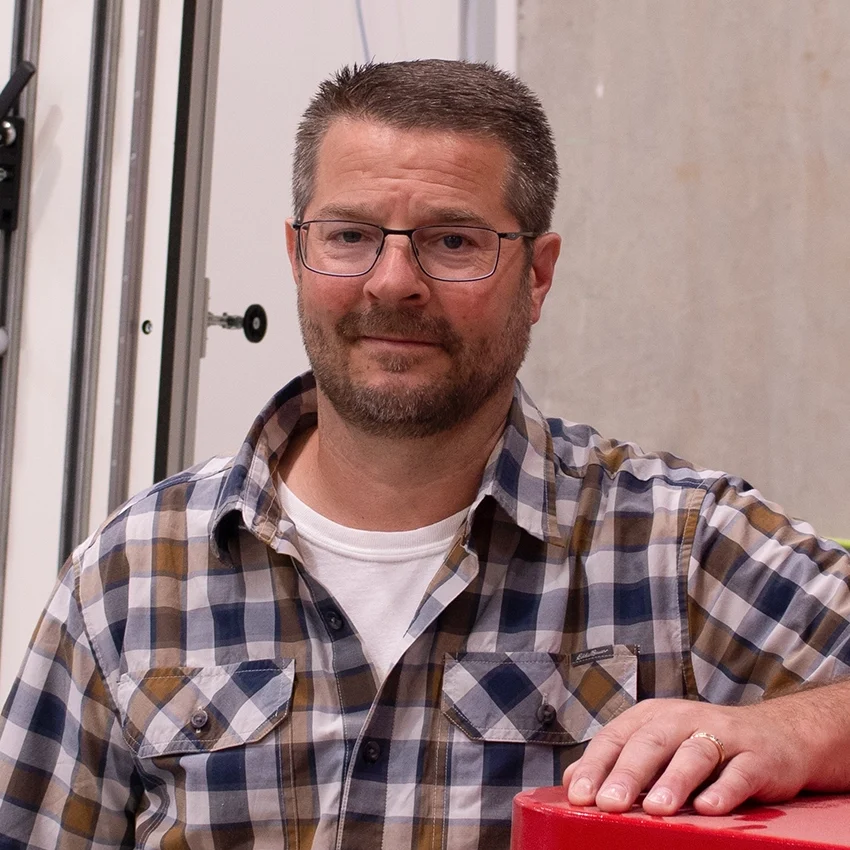Programmable logic controllers (PLCs) have become an essential device for automating manufacturing processes. Developed in the 1960s, PLCs started out the size of suitcases and required logic programs to be drawn out on a drafting board before being loaded onto the device with a numeric keypad. Since then, PLCs have evolved to be smaller, faster, and more powerful to keep up with the increasing demands and sophistication of modern manufacturing.
The First PLCs
The first programmable logic controllers were developed as a solution to replace large banks of hardwired relays and timers. At the time, using relays and timers for applications that are now handled by PLCs posed numerous challenges. Most of these challenges stemmed from the need to use several relays to control just one machine, which took up large amounts of space. Additionally, the relays had to be wired in a specific order for the machine to operate properly. If just one relay malfunctioned, the entire system would stop working, and troubleshooting could, at times, take hours to complete. Furthermore, implementing changes posed another set of challenges as they often required reconfiguring the entire system.
The emergence of the first PLC in 1968 meant large banks of relays could be replaced by a single device that was easier to maintain and could be programmed with the already accepted relay ladder logic. In addition, the PLC was equipped with enough memory to retain loaded programs in the event of power outages and was also designed to operate in industrial environments where dirt, moisture, electromagnetism, and vibration were often present.
Innovative Improvements
1970s
With inexpensive microprocessors becoming available in the late 1970s, PLC manufacturers began developing graphical programming devices. These devices enabled PLCs to be digitally programmed with graphical representations for normally open and closed relay contacts, pushbuttons, switches, relay coils, motor starters, valves, timers, and more. Unfortunately, these programming devices were prohibitively expensive, often costing more than the PLC they were designed to program. The programming devices were also only compatible with a single manufacturer’s controllers, further reducing their utility.
1980s
Third-party software packages that worked with multiple PLC hardware platforms came available in the 1980s to alleviate the high cost of early programming devices. These third-party software packages also offered vastly improved documentation and reporting capabilities over the OEM programming devices. This led PLC manufacturers to develop and market their own competing programming packages, as well as purchase many of the third-party software companies.
The 1980s also saw the introduction of the IEC 61131-3 Standard for Programmable Controllers, which is the standard all PLC software is held against. The IEC brings consistency to PLC software programs by defining various standards for data types, naming conventions, program flow, and other programming elements. More specifically, the standard ensured functions and function blocks looked the same and had the same defined inputs and outputs, making it easier for engineers or maintenance personnel to understand the program. The IEC also established five PLC compliant programming languages, consisting of LD function block diagrams (FBD), sequential function chart (SFC), structured text (ST), and IL.
1990s
In the 1990s, manufacturers began requesting for machinery to include interactive terminals that allowed them to monitor their PLC software. In addition, the terminals would allow operators to quickly see what was wrong with their machines preventing them from having to spend hours troubleshooting. This idea led to the development of the human-machine interface (HMI).
Initially, HMIs were merely a digital replacement for physical pushbuttons and were considered too expensive for applications that had less than 20 pushbuttons. However, with continued development and growing demand for machine monitoring, HMIs gained the ability to translate the machine data being recorded by PLCs and display it in the form of system status, alarms, cycle times, reports, production counts, and more.
By the end of the 1990s, PLCs were becoming smaller, faster, more powerful, and equipped with significantly more memory. As the world moved into the twenty-first century, these advancements in PLC technology would help pave the way for manufacturers to implement a new era of internet connectivity, big data, and even forms of artificial intelligence on the factory floor.
Current Trends
Today, PLCs maintain the same core functionality and simplicity that originally made them so popular with manufacturers. However, thanks to continued advancement in processor and memory technology, PLCs continue to shrink in size while growing in power and speed. These technological advancements have led to new capabilities, such as vision system integration, motion control, and support for multiple communication protocols. Modern PLCs also seamlessly integrate with ERP and MES systems, as well as powerful machine monitoring software and SCADA, providing new ways for manufacturers to drive improvements to their operations’ efficiency and performance through machine data analysis.
About Process Solutions
Located near Seattle, Washington, Process Solutions has over 30 years of experience providing high quality and reliable control systems. With over 100 engineers and technicians on staff and an output of over 3,000 industrial control panels per year, Process Solutions is the Northwest largest control systems integrator. In addition to custom control panel design, build and commissioning, Process Solutions’ control systems services include PLC and HMI programming, robot system integration, energy management and refrigeration systems, SCADA software, and DAQuery machine monitoring software.
